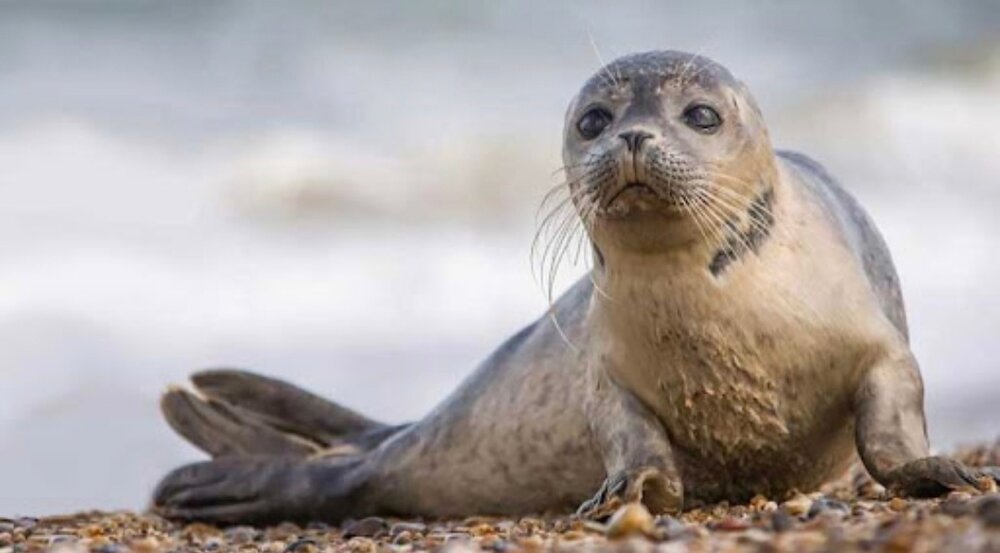Caspian seals awaiting protection plan to survive extinction

TEHRAN – The endangered Caspian seals, the sole marine mammal inhabiting the Caspian Sea, do not have suitable breeding grounds, so it is necessary to develop and implement a protection plan as soon as possible.
"The Caspian Sea condition is not appropriate for species such as the Caspian seal, because in the breeding season it needs to migrate to the northern parts to give birth to its offspring on floating ice, but warming has caused the water to freeze less. And shrinking seawater reduces seals' access to suitable breeding grounds.
The situation has caused the Caspian Seal Conservation Center to register the birth of seal pups on the shores of Iran for the first time in the last one or two years; Where it is not suitable at all. This shows that the northern regions do not have the security and conditions necessary for the reproduction of Caspian seals, and seals have inevitably chosen other places for reproduction.
If this situation is to continue, the issue should be considered in the Caspian seal protection plan and protected areas should be defined for the species breeding, Amir Sayad Shirazi," Director of the Caspian Seal Conservation Center said.
The population of Caspian seals has declined by 95% compared to 2015.
Regarding the latest statistics on the population of Caspian seals, he stated that the latest statistics are related to 2015 when the population of Caspian seals is estimated at 70,000, showing more than 95 percent decline.
Our main problem is that the Caspian Sea is located between five countries, which unfortunately have no coordination on environmental issues, he said, adding, a species like the Caspian seal, which has been inaccessible for years, has been listed as endangered by the International Union for Conservation of Nature since 2008.
"It is unfortunate that most of those who do scientific work on this species are not from the Caspian littoral countries, and researchers from countries such as Japan, the Netherlands, and the United Kingdom are active in this field."
"Such a situation has prevented the development of a codified program for the protection of Caspian seals. Although conferences and talks on the protection of Caspian seals and other endangered species may be held every year, none of which have no practical guarantee.
Few non-governmental organizations, such as the Caspian Seal Conservation Center in countries such as Iran, Russia, Turkmenistan, and Kazakhstan, have begun to work to protect the species, but the consensus of officials and governments of the five countries has not been achieved," he regretted.
In 2008, Iran’s Department of Environment started the seal conservation program with the support of the Zeehondencreche, a seal protection center founded by Lenie 't Hart. And in 2019 the second center was established in Kazakhstan.
If the protection plan is launched and the various organizations related to the Caspian seal come together, we can take effective steps to protect this species, provided that governments implement this program regionally and internationally, he concluded.
Sea pollution and diseases are among the factors contributing to the decline in the Caspian seals, he concluded.
The oil spill, industrial waste as well as heavy metals, agricultural pesticides, radioactive waste, wastewater, and household waste entering the sea, and noise pollution caused by oil and gas refineries, and excessive boat traffic have pushed the species toward extinction through poisoning them.
National plan to protect Caspian seals
The National Action Plan to protect the endangered Caspian seals was prepared on March 21, carried out under the supervision of the DOE with the cooperation of non-governmental organizations and all responsible bodies.
Caspian seals included on CMS
Caspian seals are included in Appendices I and II of the Conservation of Migratory Species of Wild Animals (CMS).
As per Appendix I of the Convention, poaching and illegal fishing activities are banned to save the animals from extinction, while Iran has not had a share in illegal fishing of the species since the very beginning, she concluded.
Over the 12th Meeting of the Conference of the Parties (CMS COP12) to the Convention on the Conservation of Migratory Species of Wild Animals (CMS), administered by UN Environment on October 28, 2017, Caspian seals were included on Appendices I and II of the Convention.
According to the Conservation of Migratory Species of Wild Animals Website, Appendix I comprises migratory species that have been assessed as being in danger of extinction throughout all or a significant portion of their range.
Appendix II covers migratory species that have unfavorable conservation status and that require international agreements for their conservation and management, as well as those that have a conservation status that would significantly benefit from the international cooperation that could be achieved by an international agreement.
FB/MG
Leave a Comment